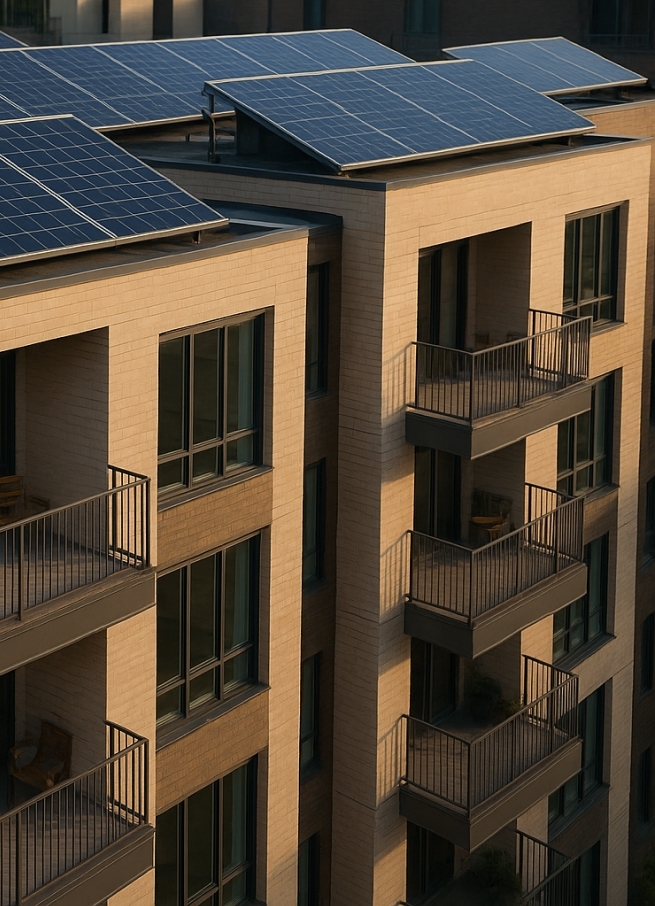How Resident Solar Bills are Calculated

With Virtual Grid by Ivy, you can trust that our proprietary algorithm and utility-grade monitoring data will accurately and equitably generate multifamily resident solar bills. However, one of our most frequently asked questions is how do we calculate our resident solar bills? We like to start by breaking down the three categories of energy.
Solar Billing Categories
Live Solar
Live solar is the amount of electricity covered by the real-time generation of the onsite solar system. This category is most common during the day when the solar panels have plenty of sunshine to generate electricity. This is the most valuable of the three categories, providing the greatest savings.
Solar Credit
When the solar system generates more electricity than needed, your community earns Solar Credits. These are used when solar energy isn’t available, including at night or on cloudy days when generation is lower. Solar Credits do contribute to savings, but they are slightly less valuable than Live Solar.
The Grid
If the electricity demand is higher than the onsite solar generation, then some electricity will come from the Grid. So, this billing category is all of the electricity not offset by Live Solar or Solar Credits. However, every resident will receive some Live Solar and Solar Credits, which guarantees their solar energy bill will be lower than it would be without solar.
How Multifamily Resident Solar Bills are Calculated
Next, Ivy’s Virtual Grid software gets to work its magic by:
- Calculating the total kilowatt-hours and the gross utility cost without solar. This is based on the actual utility rates that apply to your community.
- Determining each resident’s time-of-use intervals compared to the real-time onsite solar availability intervals. This provides the Live Solar and Solar Credit distributions.
- Converting the Live Solar and Solar Credits to a percentage discount that is taken off the gross utility cost.
Helping Residents Save Even More with Solar
Solar energy brings the greatest savings if it is used right away. This is why Live Solar is the most valuable of the billing categories. So, Ivy’s multifamily solar bill provided to residents every month includes a visual representation of how resident energy usage compares to onsite solar generation. This is an excellent feature that helps residents save even more with solar by learning how their energy usage habits impact their bills. By shifting heavier demand to the hours dominated by Live Solar, residents can maximize the Live Solar portion of their bill and maximize their solar savings. Something as simple as doing laundry between 10 am and 3 pm, instead of at night, can make a big difference.
A Solar Billing Software Like No Other
While there may be other systems using flat discounts or even communities putting the impossible task of managing shared solar savings on their property managers, there isn’t another billing software that fairly calculates multifamily solar. Ivy’s solar billing is based on actual usage and solar generation, which is the most equitable way to share solar benefits with multifamily residents. When paired with our user-friendly, transparent bills that clearly illustrate solar savings, residents, owners, and management are able to navigate shared solar in a seamless, stress-free way.





